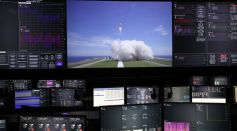SPACE
Planet, Canon Are Next Rideshare Clients for Rocket Lab
"Debris is Getting Worse!" ISS Performs Maneuvers to Avoid Space Debris

NASA Estimates $28 Billion to Meet Artemis Deadlines
Cometary Aurora May Provide Clues on Solar Wind & Space Weather

Northrop Grumman Earns Contract for Space Force's ESS Program

Rocket Lab on the Track For Its First US Launch
NASA on Enceladus - Infrared Mapping Reveals Fresh Ice on Northern Hemisphere

Four Kleos Satellites to Launch in Early November 2020

NASA's New SPLICE Technology Will Allow Pilot-Less Precision Landing

Hubble Captures "Rainbow" Images of Jupiter

Dynetics Unveils Lunar Lander for Future Artemis Mission

Chitin-Derived Materials Can be Used to Create Tools & Shelter on Mars
Russia Declares Venus a Russian Planet
Fully Automated Device Can Detect Signs of Life in Space
Most Popular

Universe Origin Revealed: Exploring the Latest Big Bang Science Theories and Discoveries

Big Bang Physics and Cosmology: Can Science Really Explain the Origins of the Universe?

Tree Communication Explained: How Underground Fungi Networks Connect Entire Forests

Space Tourism Future: How Commercial Space Travel Will Transform Civilian Exploration





